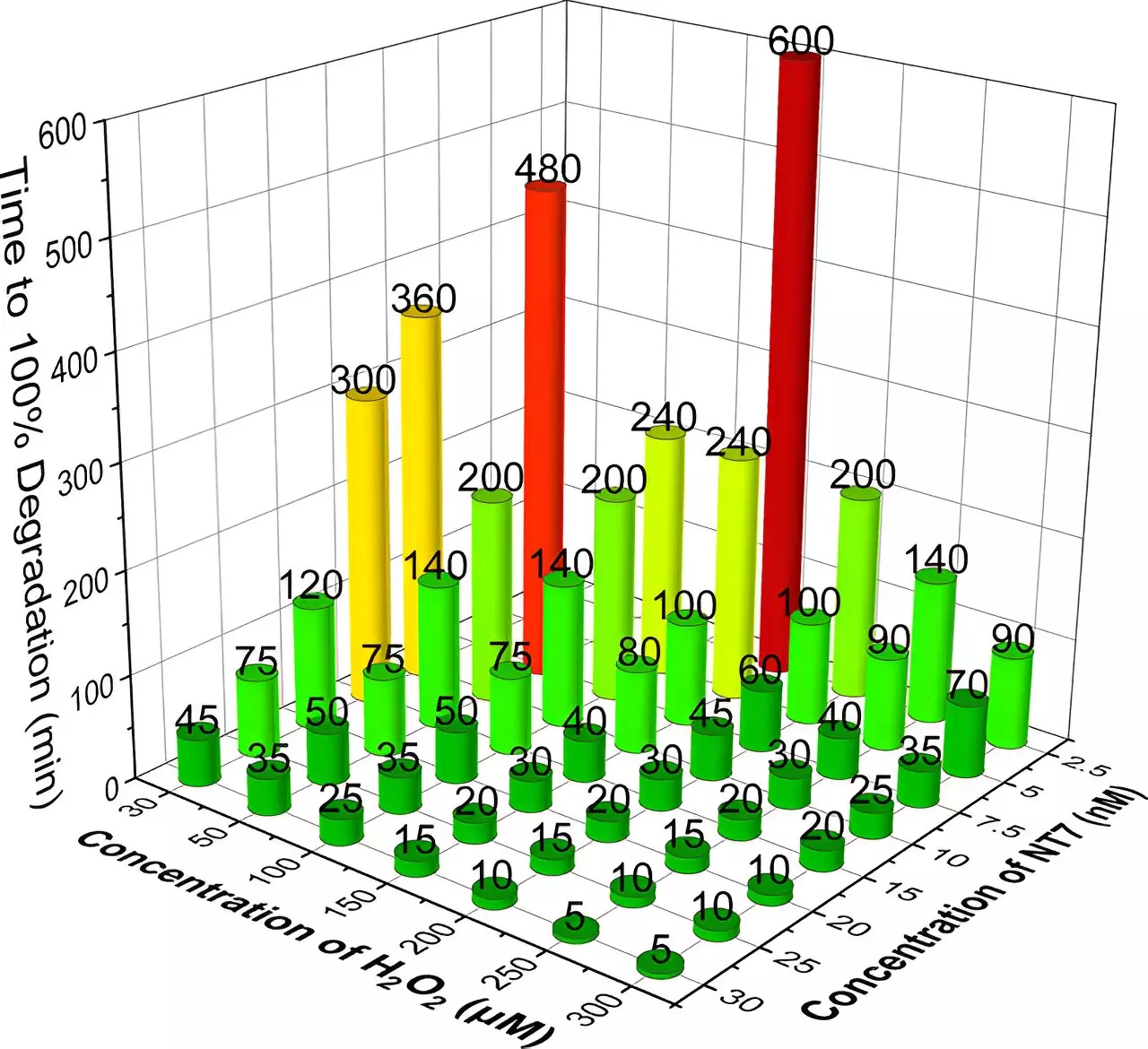In recent years, the issue of pharmaceutical micropollutants in our water systems has grown increasingly urgent. Numerous studies have identified harmful concentrations of various drugs present in municipal wastewater, rivers, and lakes, resulting from improper disposal and ineffective wastewater treatment processes. Researchers at Carnegie Mellon University have developed a groundbreaking method using a TAML catalyst combined with hydrogen peroxide that promises a sustainable, cost-effective solution to this pressing environmental problem.
TAML (tetra-amido macrocyclic ligand) catalysts are sophisticated chemical agents inspired by naturally occurring enzymes. The latest iteration, NewTAML, showcases remarkable capabilities in activating hydrogen peroxide (H2O2) for the degradation of pharmaceutical contaminants, even at extremely low concentrations. Unlike traditional catalysts that require high concentrations for efficacy, NewTAML operates effectively at diluted levels, which enables significant reductions in both catalyst usage and cost. According to Terry Collins, the driving force behind this research and Director of the Institute for Green Science at Carnegie Mellon, this innovative approach presents an effective and environmentally sound solution for purifying water contaminated with pharmaceuticals.
Through a comprehensive series of tests involving six high-concern drugs, including common antibiotics and a synthetic estrogen, the researchers showed that NewTAML could effectively reduce drug concentrations in laboratory settings and more complex scenarios, such as municipal wastewater. Their findings, published in the journal ACS Sustainable Chemistry and Engineering, showcase the potential of TAML catalysts to address a vast spectrum of micropollutants that currently evade traditional treatment methods.
According to the U.S. Geological Survey, the prevalence of pharmaceuticals in the environment is a growing concern, with an estimated 4,000 prescription medications circulating globally contributing to water contamination. The main culprits are often discarded or expired medications, which are frequently flushed down toilets or excreted by users, bypassing standard wastewater treatment procedures. This contamination can have dire consequences not only for human health but for wildlife as well. Long-term exposure to these micropollutants can disrupt ecosystems and lead to detrimental effects on animal behavior and health.
Conventional wastewater treatment facilities are frequently ill-equipped to eliminate these contaminants effectively. While advanced treatment technologies, such as ozonation and granular activation carbon adsorption, exist, their cost and maintenance requirements hinder their implementation in smaller municipalities and developing areas. The TAML/hydrogen peroxide approach may well bridge this gap by providing a low-cost alternative that is simple to implement and effective across various environmental contexts.
One of the most compelling aspects of the TAML/hydrogen peroxide approach is its simplicity. As Collins notes, the process involves merely mixing ultra-dilute TAML and hydrogen peroxide solutions into contaminated water and allowing time for the active pharmaceutical ingredients to degrade. In practical applications, the treatment duration can vary from minutes to hours, depending on the contamination level and the amounts of catalysts used, which remain minimal throughout.
In laboratory tests conducted by doctoral student Xiaowei Ma, astonishing outcomes were observed. Following the application of NewTAML and hydrogen peroxide, five out of six drugs were undetectable after six hours of treatment, while ciprofloxacin, a commonly prescribed antibiotic, showed a 95.4% degradation rate. When beginning with levels typically seen in wastewater treatments, these results are groundbreaking and indicate the viability of using this method in real-world situations.
Looking ahead, the research team aims to advance the field testing of this innovative technology. Collins has secured patents for the advanced TAML catalysts, and licensing agreements are in place with Sudoc, a startup poised to revolutionize water treatment markets, particularly in Europe. Sudoc recently attracted $20 million in funding to help facilitate this undertaking, underscoring the growing recognition of the TAML/hydrogen peroxide system’s potential.
Through continued testing and refinement, the TAML catalyst approach could not only enhance our ability to treat wastewater efficiently but also offer scalable solutions for tackling other critical environmental issues. The journey towards cleaner, safer water bodies may soon see a significant leap forward thanks to this pioneering research. As scientists like Collins and their teams work to bring these innovations to scale, the hope for sustainable water purification practices becomes increasingly tangible.


Leave a Reply